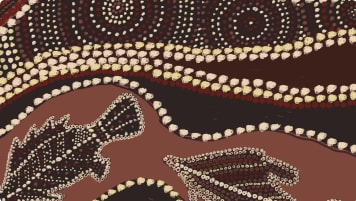The Hawkesbury River
Explore the history of the Hawkesbury River, with its charming historic towns, natural beauty, and rich Aboriginal heritage, all just an hour outside of Sydney. Odyssey offers small group tours for mature and senior travellers, couples, and solo travelers to Australia and New South Wales.
19 Mar 21 · 7 mins read
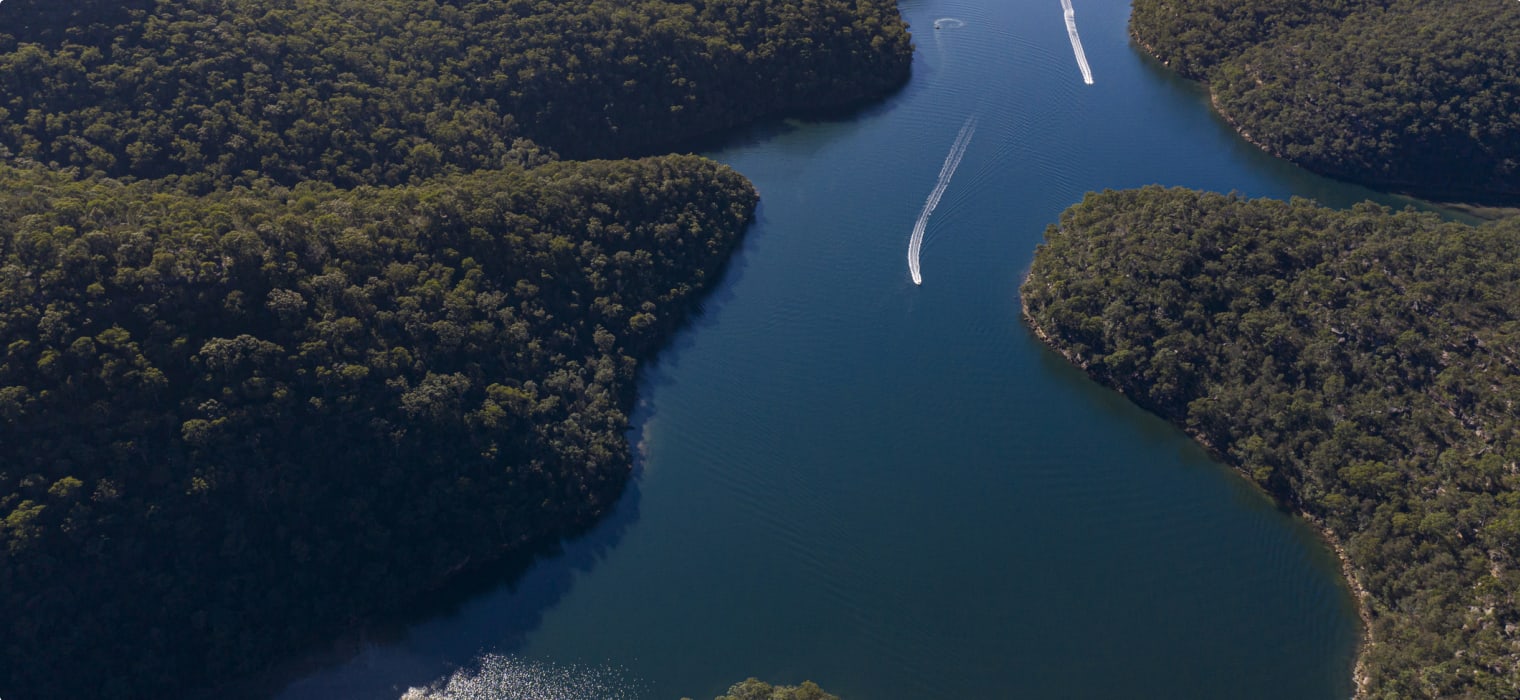
The Hawkesbury River
Located just an hour’s drive northwest of Australia’s largest metropolitan city of Sydney, The Hawkesbury River region is a peaceful, and serene landscape with all the hallmarks of a flourishing rural agricultural region, replete with farmers markets, fruit and orchard picking and more. Dubbed in its early colonial days as the ‘Nile of New South Wales‘, it was the first successful farming area for colonial agriculture and free pastoralists, coming to be known as the the ‘bread basket’ for the growing city for centuries to come. Even today it remains the bread basket region of Sydney, with local farmers producing everything from apples, oranges, stone fruits, nuts, as well as vegetables and berries. Despite technically being part of the Sydney region, the Hawkesbury River region is still predominantly rural, with farmers markets, orchards and pastoral land characterising the landscape around its historic towns. The region’s Aboriginal heritage is even more deep and profound, with roots indicating an Indigenous tradition among the most ancient, and archaeologically significant in the entire country. The river stretches from its main tributary in the Nepean River, all the way out to sea at Broken Bay, some 120km to the east, with a geological history dating back to the time of the supercontinent of Gondwana. Together these two rivers effectively form the geographic boundaries for what constitutes much of the Greater Sydney Region. With a reputation as a popular weekend destination, or day trip for travellers coming from Sydney or the Central Coast, the Hawkesbury is the perfect place to relax and experience nature and simplicity, with its charming historic towns being perfect spots for morning tea or lunch, or a Hawkesbury River cruise allowing travellers to take in the fresh air, just a stone’s throw away from the Blue Mountains National Park.
Related Tours
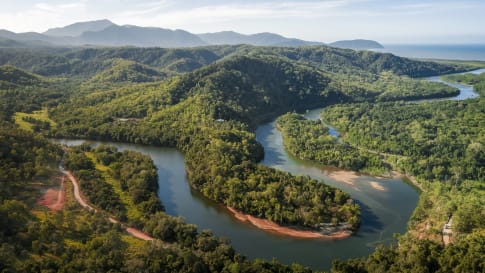
7 days
Sep, Apr, OctExploring the Hawkesbury-Nepean River small group tour
Visiting New South Wales
Explore the Hawkesbury river region with a small group tour for mature and senior travellers, travelling as a couple or solo travellers . Learning about the Aboriginal outback and contemporary art. as you travel up and down and beside the Hawkesbury river.
From A$5,150 AUD
View TourHistory of the Hawkesbury River
The Hawkesbury River is geologically speaking, incredibly ancient, dating back 200 million years to the time of the supercontinent Gondwana, when Antarctica, Australia, Africa, South America, and India were all part of a greater landmass. Back in these ancient times, the Hawkesbury was a great sandy river, flowing north from a mountain range in what is now Antarctica. As the continent began to break up around 100 million years ago, Australia began its gradual drift north, over time islands like New Zealand, and New Caledonia also broke away from Australia’s eastern coastline, causing tectonic shifts that gave rise to today’s Blue Mountains. In fact all he rivers in the region predate the rise of the mountains, with ancient traces of each river gradually weaving gorges and flaws throughout the landscape. The earliest traces of human habitation in the Hawkesbury region coincides with the arrival of Aboriginal Australian’s on the continent, with the region’s Aboriginal heritage pointing to human habitation as early as 47,000 years ago, much sooner than many conventional accounts. The Hawkesbury is known in its native tongue as ‘Dyarubbin’, with the first artefacts of Aboriginal origin discovered in an incredibly important archaeological site known as Lapstone Creek Rock Shelter, known by locals as ‘Emu Cave‘. Emu cave was an excavation site during the 1930s and 40s, with discoveries ranging from stone axe heads, to quartz tools, and other small backed tools. The finds within mark one of the first places of thorough European Australian engagement with Aboriginal archaeology and deep history. Prior to this, the common conception had dismissed ancient Aboriginal history as that of a simple unchanging stone age people, an attitude illustrative of the era’s racially charged attitudes.
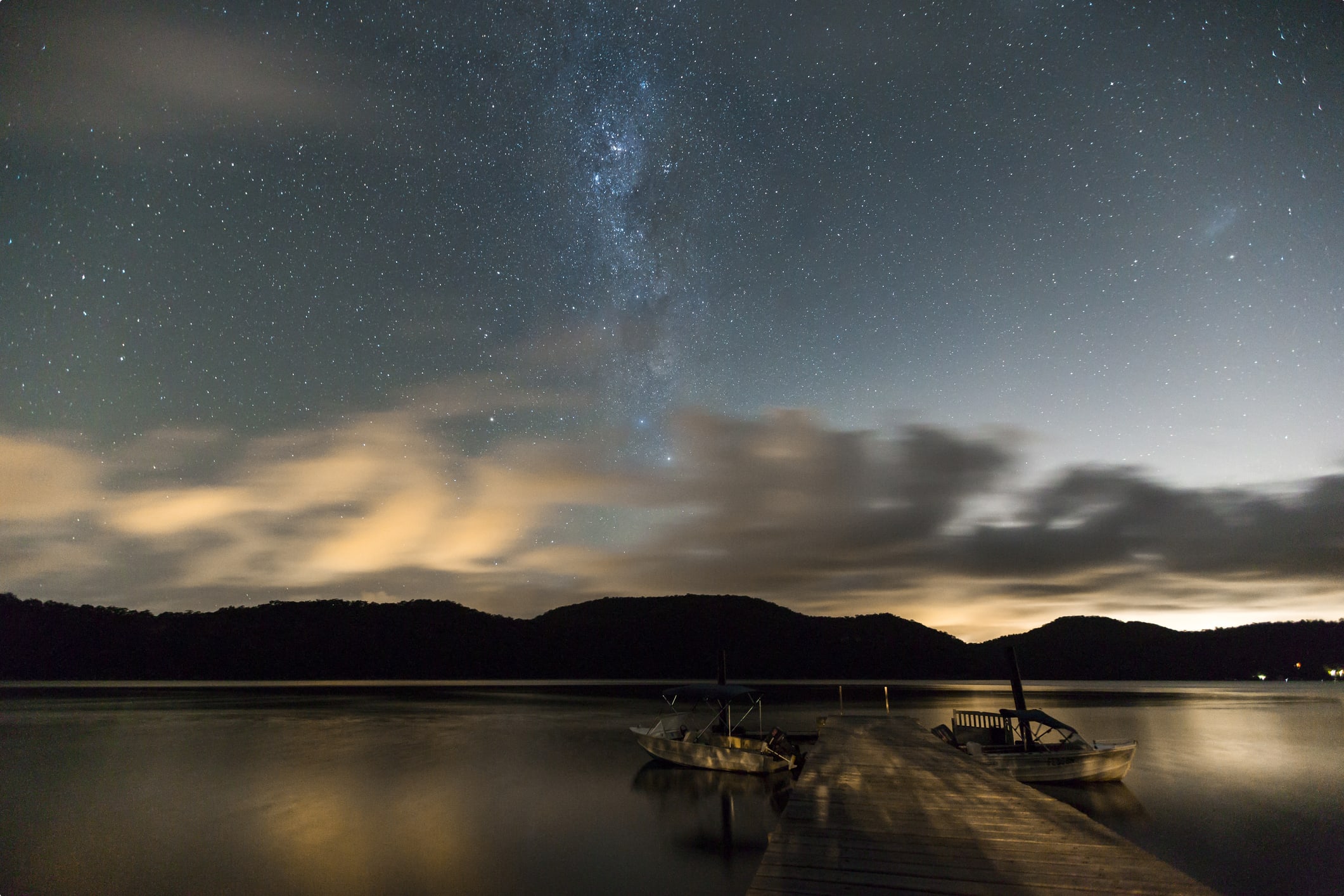
This deep history the Aboriginal people have with the land runs back some 120,000 years. For the Hawkesbury valley the deep history is illustrated by archaeological finds which place Indigenous habitation at a date as early as 47,000 years ago. What prompted this incredible story was the discovery of an ancient stone chopping tool, dated at the time to between 26,000 -32,000 years old, one of the oldest artefacts found on the east coast. The stone itself resembles a medium size rock, with three large scalloped indentations missing from its side, a pattern evident of human use. It was found in the 1970s by archaeologist Father Eugene Stockton, and prompted a heated discussion in light of the site’s excavation and development. Just a decade earlier in the 1960s, Australian archaeology had begun to pick up in earnest, with estimates commonly dating Aboriginal settlement in Australia back 15,000-20,000 years ago, with sites such as Emu Cave being instrumental in provoking this exploration. However, as more discoveries were made, and dating methods beyond radiocarbon became more widespread, the timeline of Aboriginal habitation was found to be even more ancient than previously thought. During the 1980s, the Hawkesbury stone caused yet another breakthrough, with more accurate and modern dating techniques placing the stone at an unprecedented age of 47,000 years, sparking headlines such as ‘The Oldest known site of Modern Man’. As further finds along the river basin were unearthed, archaeologists have come to agree that the Hawkesbury-Nepean region is one of the oldest sites of Aboriginal habitation in Australia, with the area even likely to be part of the initial colonisation wave.
The first European to explore the region came in 1789, with Governor Arthur Philip ‘discovering’ the river, and naming it in honour of the Baron of Hawkesbury. The region came to be an important agricultural region in early colonial New South Wales, being the first successful example of its kind, with colonial projects in the region such as the Great North Road dating back as early as 1825. The Hawkesbury, and its surrounding historic towns such as Windsor, Richmond, or Kurrajong, bear traces of this legacy till today, remaining productive rural agricultural communities, with a history and economy inextricably linked to the city of Sydney.

Travelling to the Hawkesbury River
At just an hour’s drive outside of Sydney, a Hawkesbury River tour is an unexpectedly easy retreat from the sometimes frenetic pace of city life. Its serene river waters are perfect for a boat ride and morning tea, and it’s charming colonial architecture gives the sense of being deep into an idyllic countryside, or a delightful rural hamlet. A Hawkesbury River tour will likely start in one of the town’s near the river‘s confluence with the Nepean, and Grose Rivers, of these Windsor, and Richmond are some of the best places to begin. In Windsor you can find a number of heritage buildings, as well as shopping, and a craft market which runs every Sunday, you may also want to visit the historic St Matthews Church designed by colonial architect Matthew Greenway, who arrived at the colony in 1814 as a convict. Some other highlights in Windsor include the regional gallery, and museum, where you can experience more of the region’s cultural heritage, as well as learn about the history of the Darug Aboriginal people. Just to the east of town, another place to visit is Ebenezer Church, which holds the title as Australia’s oldest church, dating all the way back to 1809.
Just to the west of Windsor you’ll come upon the town of Richmond, like Windsor, the town is full of heritage homes, as well as a number of old churches and a historic cemetery. Richmond is a fantastic town for antiques as well, with a number of shops scattered across the town, as well as some delightful spots for lunch or afternoon tea. One of the best spots to visit while in Richmond is the Streeton lookout, from here you can see some stunning views of the Hawkesbury River, as well as spy an old RAAF base. Heading north across the river, you’ll come to the charming town of Kurrajong. Nestled in the shadow of the Blue Mountains, Kurrajong is the perfect spot from which to embark on some wilderness adventures, though there’s some lovely shopping while in town as well. For a trip into the mountains, take the road through Bilpin to Mt. Tomah in the Blue Mountains National Park, here you can find the Blue Mountain Botanic Gardens, as well as a number of lookouts with spectacular views of the surrounding wilderness. Just a little to the west you can also make your way to Emu Cave, characterized by the emu footprint engravings on the cave walls, and famous for its 20th century archaeological significance in discovering the ancient heritage of New South Wales’ Aboriginal people.

Another spot you’ll definitely want to check out is Wisemans Ferry, you can find the ferry by following the river along to the east, closer towards Lower Hawkesbury. Wiseman’s ferry is a great day trip idea from any of the Hawkesbury’s towns, with the ferry being a great way to visit the world heritage listed Old Great North Road. Just a short boat ride across to the northern side of the river, you’ll find this historic site, built by convict labour between 1825 and 1836, the road covers a total distance 260km, an enormous infrastructure undertaking at the time for the small colony. Today the walk along the road‘s track is roughly a 9km loop, though you can always explore it at your own pace and leisure. In all, a trip to the Hawkesbury is a fantastic way to experience a natural wilderness, with comforts like a Hawkesbury river cruise or blue mountain adventure, being the ideal accompaniments to this delightful historic region.
For an amazing history of the Hawkesbury, Odyssey highly recommends Grace Karsken’s ‘People of the River’ (2020), which has been a great source of inspiration for this article.
Articles about Australia published by Odyssey Traveller:
- Broken Hill
- Dubbo
- Uncovering the Ancient History of Aboriginal Australia
- The Australian Outback: A Definitive Guide
- The Kimberley: A Definitive Guide
For all the articles Odyssey Traveller has published for mature aged and senior travellers, click through on this link.
External articles to assist you on your visit to Australia:
Articles

Aboriginal Art
Senior and mature couples and solo travellers remain curious but often informed about the role Aboriginal art plays in the indigenous community and the various styles. This article seeks to provide a platform for this collection of small group tours of upto 15 people into the Australian outback where often Aboriginal art styles are encountered.
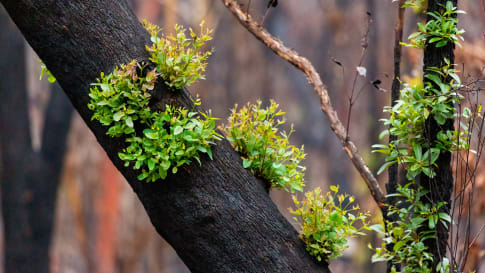
Aboriginal Fire Management
Small group tours for mature and senior travellers in the Australian outback to learn and appreciate land management techniques for couples and solo travellers reflecting Aboriginal culture in Kakadu, Tasmania, Arnhem land and the Kimberley.
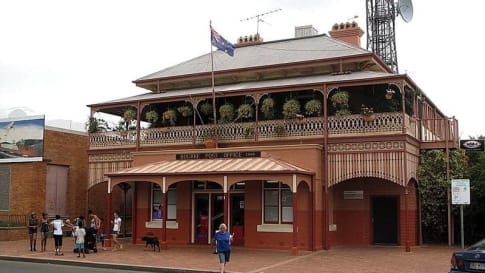
Bourke, New South Wales
Bourke, a historic settlement on the upper reaches of the Darling river. For escorted small group tours of upto 15 people for mature and senior travellers exploring Bourke is an important part of the Aboriginal, cultural and pastoral history of outback NSW.
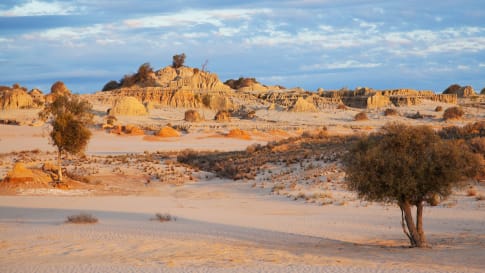
Mungo Man and Mungo Lady, New South Wales
Part of a small group tour of World heritage sites on Victoria, NSW & South Australia for mature and senior travellers. Learn and explore in the Mungo National park about Aboriginal settlement and the fauna and flora of this National park.
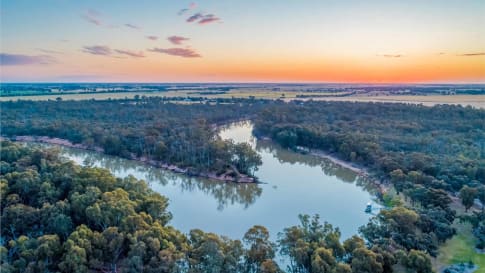
Appreciating Australian River Systems
Appreciating the linking of the river network into the Australian, history, culture and landscape on a small group tour for mature and senior travellers of couples or solo travellers is an integral part of understanding the continent of Australia and Aboriginal settlement.
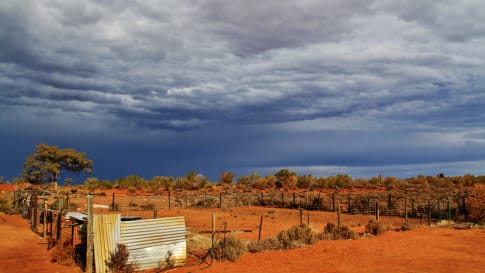
Wilcannia, New South Wales
Wilcannia was once the third largest inland port in all of Australia. During the great river boat era of the mid-19th century, the port thrived as wheat and wool was transported along the Darling River by paddle-steamer. Article explains the town history and place in Aboriginal and the colonial period for mature and senior travellers on a small group tour of New South Wales.
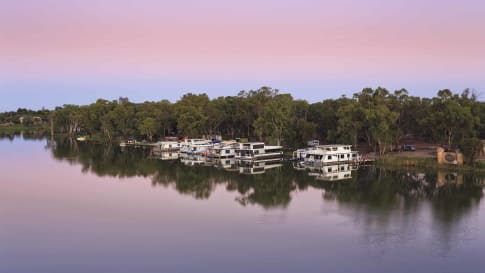
Wentworth, New South Wales
Article for mature and senior travellers travelling on a small group tour to this historic town situated on the junction of the Murray and Darling Rivers in southwestern New South Wales. Once Australia’s busiest inland river port frequented by paddle steamers. Many historic buildings remain today from its heyday including the Old Gaol, the Courthouse, the Convent and the Customs House, defining the character of this New South Wales Town.

Why did the British settle Australia?
Escorted small group tours for mature and senior travellers that promote aboriginal and colonial history discussion on tour. For couples and solo travellers interested in learning about Aboriginal history and the colonial explorers across the states.

Aboriginal Songlines
Songlines trace the journeys of ancestral spirits who created the land and all natural phenomena. The creation stories as well as practical knowledge needed for survival in outback Australia. We experience this knowledge on our small group tours into Outback Australia.

Ancient Aboriginal trade routes of Australia
Ancient Aboriginal trade routes of Australia Trade was a central part of life for Aboriginal people prior to the British settlement of Australia. Trading routes criss-crossed the nation, dispersing goods, information, technologies and culture thousands…
